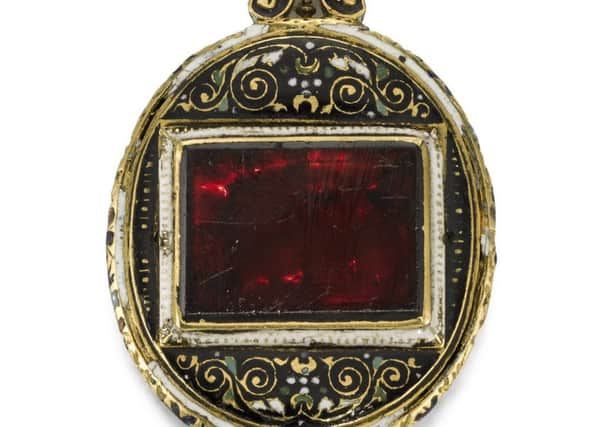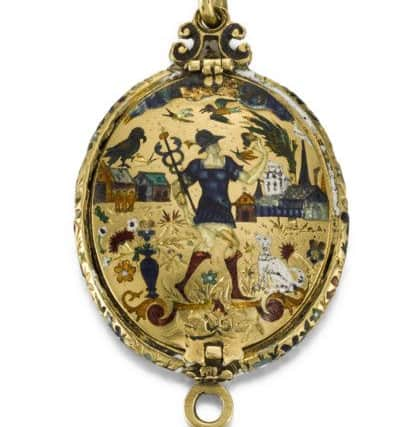16th century jewel secured by National Museum of Scotland


The National Museum of Scotland has snapped up the “Fettercairn Jewel”, an elaborate gold and enamel pendant locket set, after it was put up for auction in London.
Experts believe the previously unknown treasure, discovered in a closet off a library at Fettercairn House, in Aberdeenshire, could be linked to the famous Darnley Jewel and the Houe of Stuart.
Advertisement
Hide AdAdvertisement
Hide AdIt is one of the most important early pieces in the Queen’s Royal Collection, which is believed to have been commissioned by Lady Margaret Douglas, mother-in-law of Mary Queen of Scots.


The National Lottery and the Art Fund charity helped the museum meet the £236,500 cost of buying the jewel, which experts will now carefully examine and trace its history before it goes on public display in Edinburgh.
A bidding war over the fate of the jewel - described by the auctioneeers as an important rediscovery for the history of Scottish Renaissance jewellery - saw it go under the hammer for far more than its expected price of between £30,000 and £50,000.
Believed to protect its weather from lightning and plague, the jewel was part of a treasure trove of artefacts sold by the new owners of Fettercairn House, in Aberdeenshire.
Advertisement
Hide AdAdvertisement
Hide AdMore than 400 works of art went under the hammer less than a year after the sale of the sprawling Mearns property severed ancestral links dating back to the late 18th century.


The Forbes family collection, which spanned the 16th century to the present day, included work by the artists John Robert Cozens, Sir Henry Raeburn, Sir Thomas Lawrence and Allan Ramsay.
Museum officials said the “exceptionally rare” piece it has acquired may have been made by the same Edinburgh jeweller as the one in the Royal Collection, which it borrowed for its 2013 Mary Queen of Scots exhibition.
A spokeswoman said: “During the Scottish Renaissance there was a practice of extensive court gift-giving of jewellery and a vast amount of jewellery was gifted each year by the royal family to Scotland’s elite families.
Advertisement
Hide AdAdvertisement
Hide Ad“We will investigate potential links between this jewel and the Scottish royal court, and the potential of its links to the Darnley Jewel.
“During the Scottish Renaissance there was a practice of extensive court gift-giving of jewellery and a vast amount of jewellery was gifted each year by the royal family to Scotland’s elite families.
“We will investigate potential links between this jewel and the Scottish royal court, and the potential of its links to the Darnley Jewel, which was commissioned at some time between 1564 and 1571.”
David Forsyth, principal curator in Scottish history at the museum, added: “The Fettercairn Jewel is a rare and outstanding piece of Scottish Renaissance jewellery.
Advertisement
Hide AdAdvertisement
Hide Ad“The purchase of this piece will significantly enhance the national collections and present new insights into the magnificence of the Renaissance in Scotland.”
Stephen Deuchar director of the Art Fund, said: “We are very happy that the museum was successful at auction and that we could play a part in ensuring that this exceptionally rare and important piece of Scottish Renaissance heritage can remain in Scotland for future generations to enjoy.”